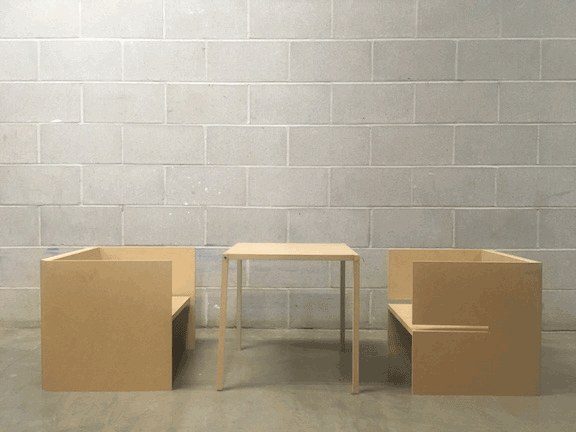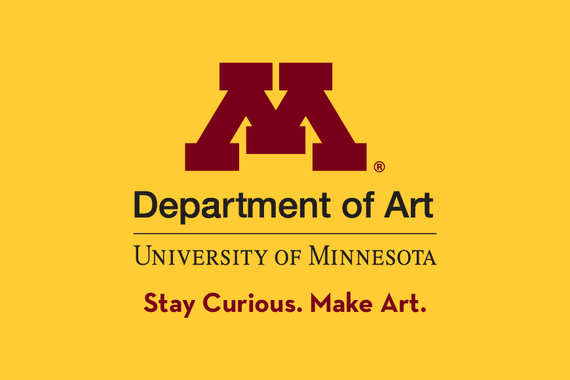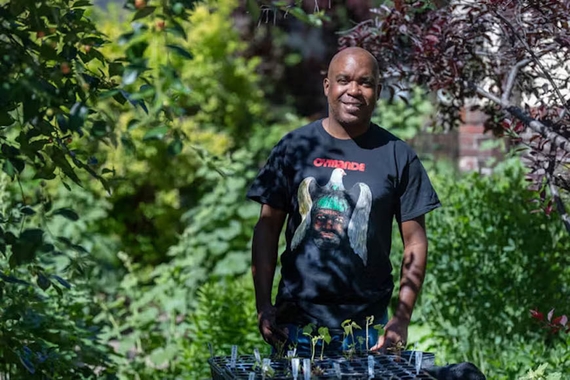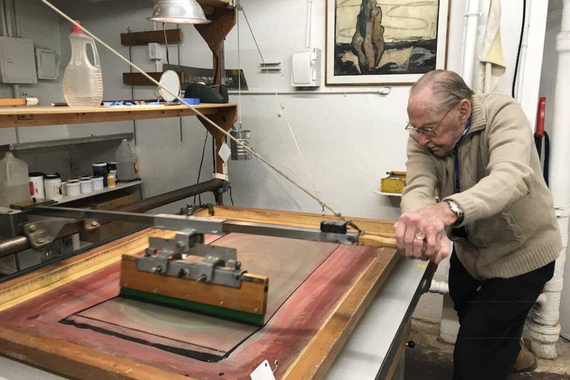Nels Shafer Gleams the Cube - 2018 SOFA Residency
The SOFA Residency was a pilot program in the Spring of 2018 at the Regis Center for Art that provided two undergraduates an opportunity to create a Sculptural Object of Furniture Art (SOFA) with the assistance of the Department of Art personnel and facilities
Nels Shafer was the second recipient of the SOFA Residency, along with Frankie Yu. Nels is part of the Bachelor of Individualized Studies program at the University of Minnesota, studying Art, Biology, and Japanese. His piece titled ‘open cube’ is a modular set of chairs and a table that fit together into a cube when not in use.

Nels says the Department of Art has been a great place to explore because of the focus on learning by doing – he can experiment with CNC routers, laser cutters, and 3D printing, exploring art but also engineering without the constraints and prerequisites of other routes.
He enjoys creating things that move, interact, or serve some function in addition to being aesthetically pleasing – taking courses in Experimental Media and 3D Modeling and Digital Fabrication only deepened his belief that art doesn’t have to be a static, pretty object you can’t touch as in traditional art museums. He prefers works that the audience can experience physically and conceptually at the same time, akin to those found in children’s or science museums.
Nels applied for the SOFA Residency because he had taken the 3D fabrication course with lecturer and research technician Robin Schwartzman, and was attracted by the challenge of a larger scale work, treating it as a sort of modular, 3D puzzle with a functional dimension as a piece of furniture.
It was his first time working with wood on this scale and encountered numerous challenges in the process. In order to make the pieces interlock perfectly, extreme precision was required in both measurements and equipment settings as well as the inclusion of tolerances to account for warping and other natural properties of the material. There were stressful, even embarrassing moments during the process, but he has a positive attitude and views it as a valuable student learning experience that will serve him well going forward. Nels says it gave him insight into how to visualize a project from start to finish, from concept to final assembly and learned to approach initial design questions in terms of the capabilities of the different tools available.
Developing proficiency with wood was also accompanied by a greater sense of connection with the carpentry/remodeling work of his grandfather and uncles. This was a surprising and satisfying part of the process that Nels is excited to share with them at the next family gathering.
He says now he is “seeing tables and chairs in a completely new light, often stopping to look at the material, and figuring out how they were put together” to be both functional and aesthetically pleasing. The SOFA Residency makes him want to keep building, and he wishes he had started taking these sorts of design and fabrication courses earlier.
Going forward, he feels empowered by his hard-earned skills and knowledge with these tools, giving him the ability to take his ideas and realize them through fabrication, which he finds “very liberating.”
Nels has received a UROP (Undergraduate Research Opportunities Program) grant to work with Associate Professor Diane Willow over the summer to convert a 3D Printer in the Department of Art into a “bio-printer” – a new biological sciences tool that can print “bioinks” with embedded bacteria among other applications. His hope is that the tool will encourage collaborations between the arts and sciences and help students introduce biological elements into their work. He is also developing an interactive project with this bio-printer that is still top-secret, but will be revealed in the fall of 2018. In addition to new iterations of open cube, Nels plans to continue investigating antidisciplinary spaces while pursuing future directions in soft robotics, biofabrication, and biomimetic design.



